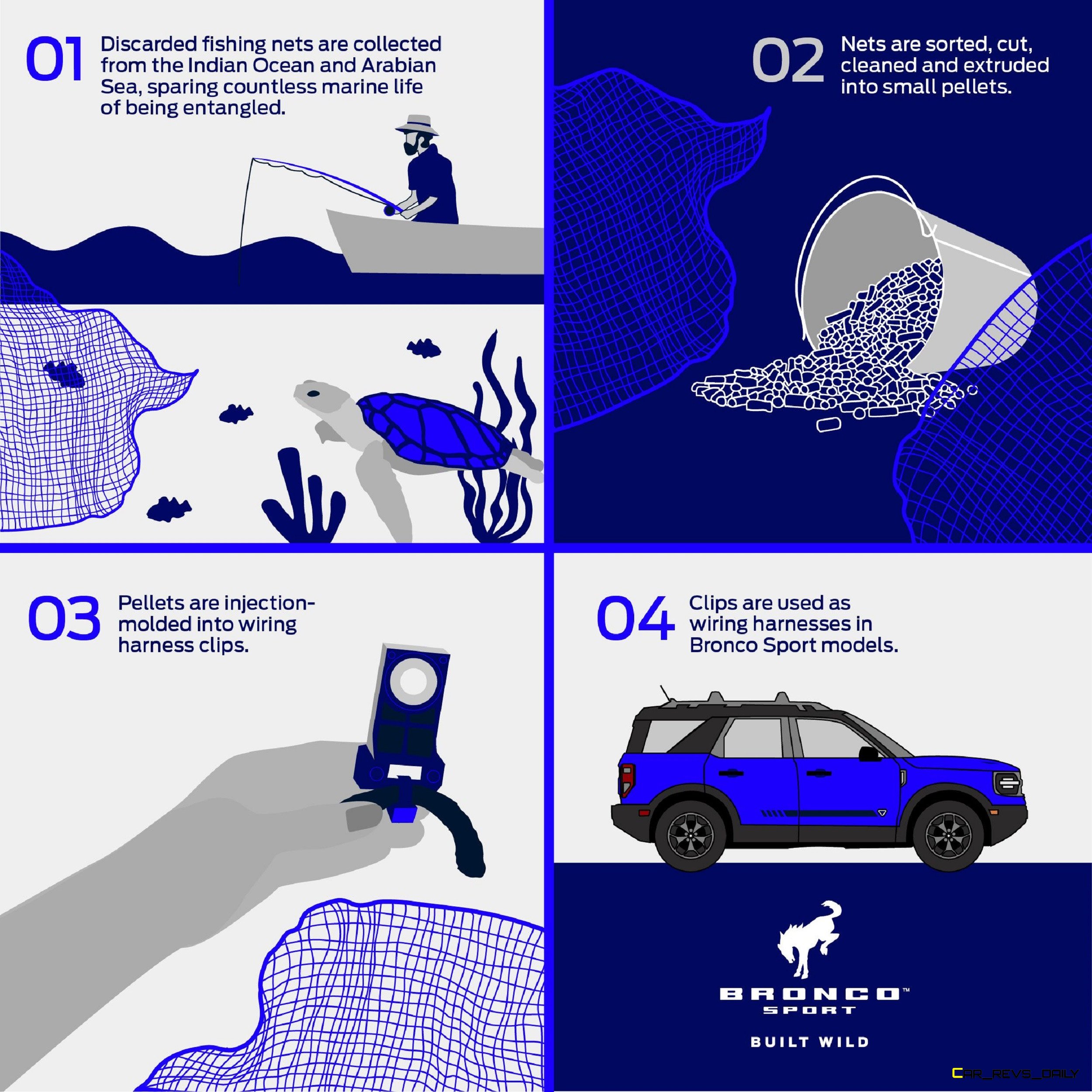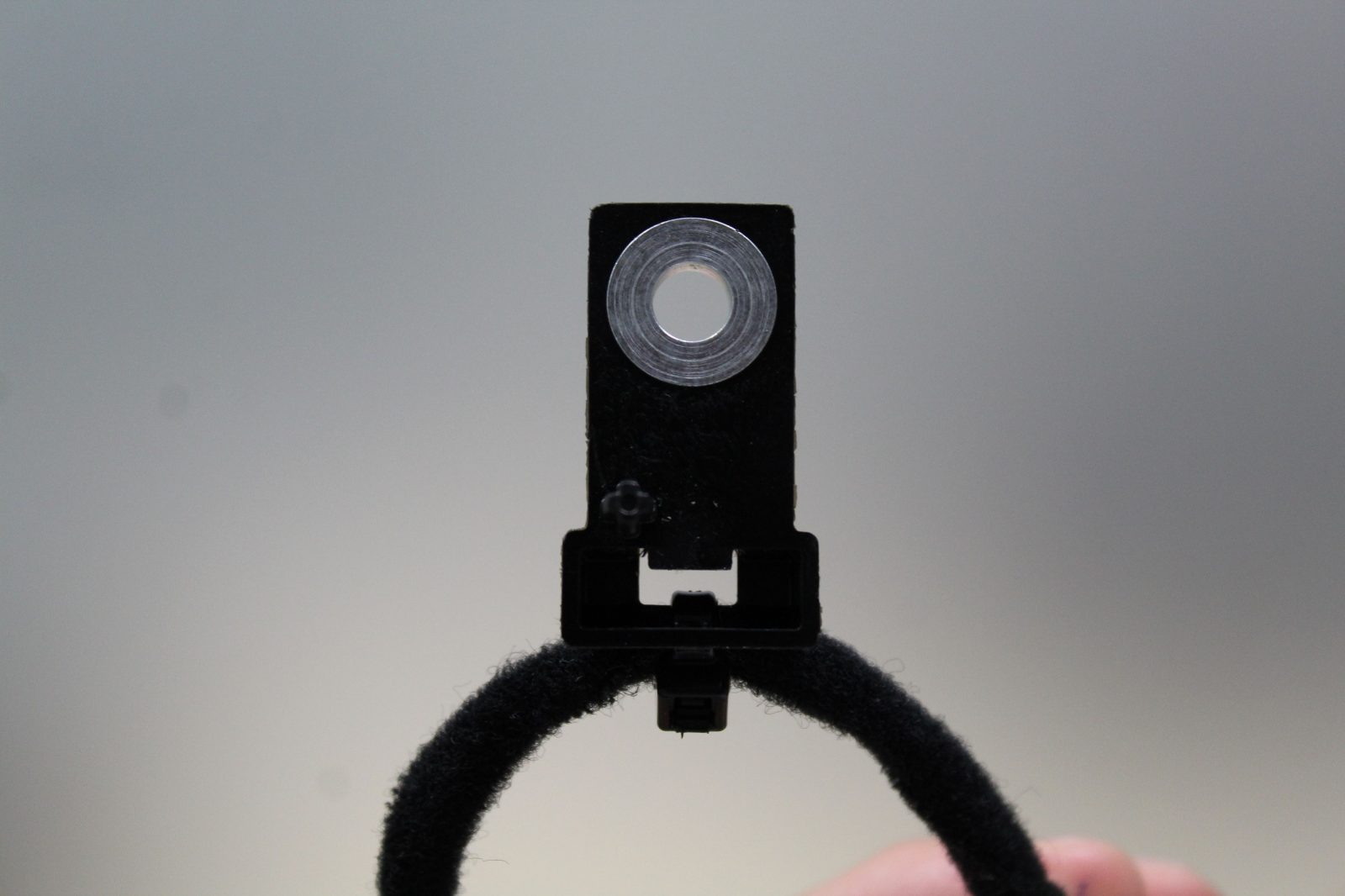An increasing number of automakers are using recycled plastics in their automobiles as part of broader goals of reducing their environmental impact. Ford is one of the companies that has embarked on this initiative, but the company revealed that it’s taking a step that no other automaker has done before, and that’s using recycled ocean plastic in production vehicles, with the Bronco Sport SUV taking the lead.
Small Part In Bronco Sport Represents Major Engineering Milestone
The parts that Ford is talking about are not large visually obvious pieces like bumpers, panels, or even interior pieces. Instead, they are small wiring clips that are used to connect wires on the second-row seats and the side curtain airbags. The pieces weigh less than five grams and while they are a mere speck in the grand scheme of things, they are a small but key step for Ford, with the company stating in the past that it intends to use 100 percent renewable materials in future products including the Bronco Sport.
Ford calls the clips “ghost gear” and that’s partially due to the plastic material for them being derived from discarded nylon fishing gear which was collected from both the Indian Ocean and the Arabia Sea. The Nylon here was designed to withstand harsh conditions in the open ocean and that allows the clips to be just as durable as traditional clips which are made from petroleum sourced plastic.
Ford’s Innovation Highlights Broader Ecological Problem

Ford’s feat of engineering is very impressive, but it also shows just how big of a problem discarded plastic has become. The material is extremely resistant to deterioration and micro pieces of plastic can be found in many species of fish as well as birds. Some of the world’s discarded plastic also ends up in areas like the Pacific Gyre where it wreaks even more havoc on the environment.
One potential solution is to use some of this plastic in new ways, with ocean-bound plastic potentially being used for automotive applications as well as other industries. Ford’s clips may be a mere blip in the face of the 13 million metric tons of plastic waste that are thrown into the world’s oceans every year, but they are a sign that perhaps long-term change is on the horizon.
In the case of Ford, this exercise also showcases the company’s growing experience with using renewable materials in its automobiles with the company using renewables in its lineup for the past few years. Back in 2019, Ford revealed that each of its new vehicles uses the equivalent of 250 bottles of plastic in their construction and that the company was exploring ways to enhance that number further. This application in the Bronco Sport is an evolution of this goal, and we loo forward to seeing what’s next.

Carl Malek has been an automotive journalist for over 10 years. First starting out as a freelance photographer before making the transition to writing during college, his work has appeared on numerous automotive forums as well as websites such as Autoshopper.com.
Carl is also a big fan of British vehicles with the bulk of his devotion going to the Morgan Motor Company as well as offerings from Lotus, MG, and Caterham. When he is not writing about automobiles, Carl enjoys spending time with his family and friends in the Metro Detroit area, as well as spending time with his adorable pets.



